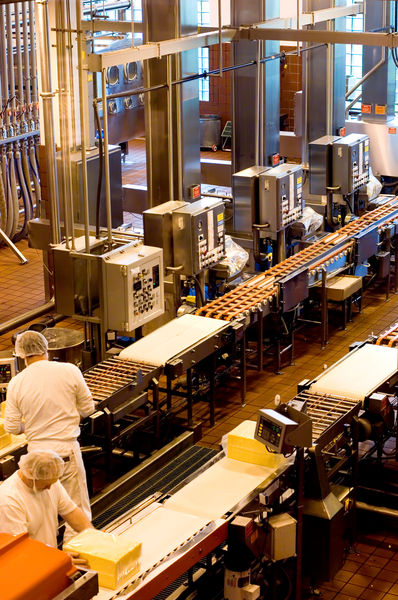DURABLE GOODS

Durable goods are those that are not consumed immediately, but which gradually wear out during the period they are used. The U.S. Department of Commerce uses three years as the consumption period to distinguish durable from nondurable, or soft, goods. Nondurable goods consist mostly of food, clothing, and other items that are consumed within three years. Some soft goods, though, are expected to last longer than three years when purchased, such as an expensive suit or coat.
Within the economy, durable goods are made for consumers as well as producers. Examples of consumer durable goods include automobiles, furniture, appliances, jewelry, and books. Producer durable goods consist mainly of equipment and machinery. Structures such as houses, factories, dams, and highways are not considered durable goods and are categorized separately when calculating the gross national product (GNP) or gross domestic product (GDP).
The production of durable goods is a component of a country's GDP. As reported in the Survey of Current Business by the Bureau of Economic Analysis and also in the annual report of the Council of Economic Advisers, durable goods that are sold to consumers appear under personal consumption expenditures. The other two categories of personal consumption expenditures are nondurable goods and services.
Consumer durable goods that are produced but not sold are reported as changes in business inventories. If more goods are produced than sold, then business inventories increase. On the other hand, when more goods are sold than are produced during a given period, business inventories decline. The category of changes in business inventories is used as an economic indicator to gauge the direction of a country's economy. Increases in business inventories may signal a weakening of consumer demand or a strengthening of productive activity.
Changes in business inventories and the purchase of producer durable equipment are reported under private domestic investment in the GDP. Fixed investment, including producer durable equipment, and changes in business inventories are the two main categories of the gross private domestic investment component of the GDP. Finally, the production of durable goods also appears in the GDP as part of a nation's exports and as part of national, state, and local government purchases.
The category of personal consumption expenditures for durable goods is also used as an economic indicator. Since the purchase of consumer durable goods can be postponed, the level of consumer expenditures tends to fluctuate a great deal from year to year. During a recession consumer expenditures for durable goods tend to decline. Increases and decreases can be used as an indicator of consumer confidence and the direction of the economy. Increases in such consumer expenditures are usually interpreted as a sign of a recovering or strong economy. Similarly, businesses tend to put off buying new equipment under uncertain economic conditions. An increase in the purchase of producer durable equipment may signal recovery from a recession or a period of expanding productivity.
The purchase of durable goods by consumers and producers represents a significant portion of the United States' GDP, although it is by no means the largest category of expenditures. Personal consumption expenditures in 1997, including durable goods, nondurable goods, and services, amounted to $5.49 trillion out of a total GDP of $8.083 trillion, or 68 percent of GDP. Of that total, consumers spent $659.4 billion on durable goods (8.2 percent of GDP), $1.593 trillion on nondurable goods (19.7 percent of GDP), and $3.237 trillion on services (40 percent of GDP). Producers spent $615.2 billion on durable equipment in 1997 (7.6 percent of GDP). In addition, durable goods contributed to the GDP in the categories of exports and government purchases. Overall, the production of durable goods accounted for $1.316 trillion (16.3 percent of GDP) in 1997, of which $1.285 trillion were final sales and $31 billion were changes in business inventories.
[ David P Bianco ]
FURTHER READING:
Economic Report of the President, Together with the Annual Report of the Council of Economic Advisers. Washington: GPO, 1998.
U.S. Department of Commerce. Bureau of Economic Analysis. Survey of Current Business. Monthly. Washington: Bureau of Economic Analysis, U.S. Department of Commerce.
Comment about this article, ask questions, or add new information about this topic: